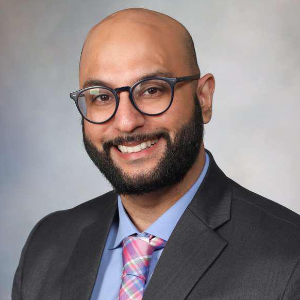Title : Disseminated histoplasmosis in post-transplant patient: A bone marrow biopsy diagnosis
Abstract:
Background: Histoplasmosis is considered a rare disease following immunosuppression in an allogeneic bone marrow transplant patient or a solid organ transplant patient, even in hyper-endemic areas, with an incidence of ≤ 1%. The majority of cases occur within the first two years of transplantation. This is a case of a post-transplant patient from North Carolina with disseminated Histoplasmosis diagnosed on bone marrow biopsy, with no symptoms to suggest a histoplasmosis infection.
Case: A 51-year-old female presented with fever and pancytopenia on day 46 post-liver transplant. An extensive infectious disease workup that followed showed streptococcus pneumoniae antigen, she began receiving adequate antibiotics for Community-acquired pneumonia. Her CT chest revealed bilateral ground glass opacities with an admixed picture of pulmonary edema, dependent atelectasis, and superimposed aspiration. Nodular consolidations were seen in the lateral basal lobe. A multi-disciplinary approach that followed resulted in bone marrow aspiration, which grew fungal yeasts and later revealed PCR-positive Histoplasmosis. This finding was backed up by the growth of histoplasma in broncho-alveolar lavage as well. Therefore, the treatment for disseminated Histoplasmosis was initiated with Amphotericin B, after which the patient’s condition improved. She was discharged on Itraconazole, which was later switched to Posaconazole due to possible tinnitus. She feels better seven months post-treatment and is on continued treatment to complete a 12-month course.
Discussion: Histoplasmosis is an opportunistic infection with documented cases in immunocompromised patients, most commonly in patients who have HIV. Limited cases of disseminated Histoplasmosis have been seen with solid organ transplants. Fungal spores are present in the soil or bird and bat droppings, which, when aerosolized, can be inhaled by the host, leading to an infection. It is particularly common in chicken coops, old barns, caves and parks. Recent surveillance from 2018-2019 revealed that simple activities like gardening, handling plants or trees, landscaping, and digging soil were also associated with an increased risk. 28% of individuals were reported to be participating or were near construction, demolition, or renovation. About 25% of patients could not recall any of these exposures. While an immunocompetent individual may develop self-limiting respiratory conditions, an individual with suppressed immunity might have disseminated or a life-threatening condition. Our patient lived in a rural setting in North Carolina with a very low incidence rate and no endemicity for Histoplasmosis. Apart from immunosuppression and DM-type 2, the patient did not account for an increased risk for the infection. To the best of our knowledge, the patient could not recall exposure to bird or bat droppings or being around a construction site recently, or traveling to an area of high endemicity. She did not have exposure to caves, barns or chicken coops. It was thus difficult to pinpoint the cause of infection in our patient.
Conclusion: The lack of specific symptoms, delay in histoplasma isolation in fungal culture and false negative antibody titres complicates the diagnosis of histoplasmosis. In a recent survey, nearly 12% histoplasmosis patients with Medicare beneficiaries and 20% patients among private care belonged to a region which was considered as non-endemic for Histoplasmosis. Additional cases of histoplasmosis have been addressed from non endemic regions like Michigan, Mexico and New York city, among others. Specific exposures in sporadic cases appear to be less obvious and could be further complicated to pin-point particularly if the person participates in leisure activity like gardening which may increase the exposure chances. Disseminated histoplasmosis should thus be considered as a potential differential in the setting of immunocompromised hosts, especially in newly transplanted recipients, along with other common opportunistic infections, irrespective of geography and a defined risk factor.
Keywords: Disseminated Histoplasmosis, Post-Transplant, Liver Transplant, Bone Marrow Biopsy.
Audience Take Away Notes
- This is an atypical presentation of Histoplasmosis infection in a transplant patient with no identified exposure factor. This qualifies as a great teaching case for healthcare providers to consider the possibility of infection even in absence of typical symptoms
- Even in regions with no reported endemicity for the infection, the risk for developing this infection must not be ruled out without a proper work up. Timely intervention can lead to favorable outcomes, if the differential is kept in mind
- A high degree of clinical suspicion is required to make the diagnosis of rare infection in a transplant patient especially when the diagnosis is complicated by other conditions in an immunocompromised individual



